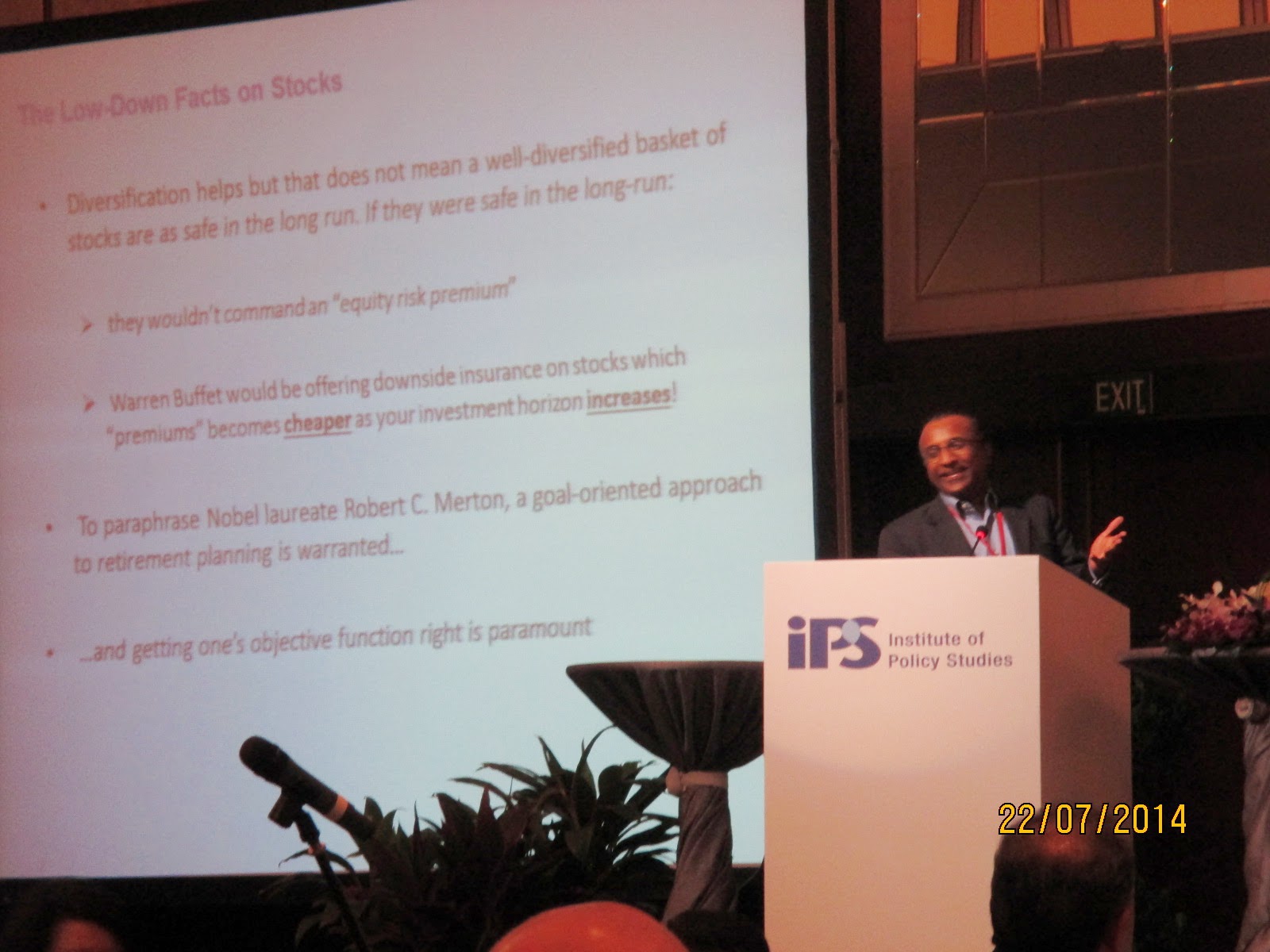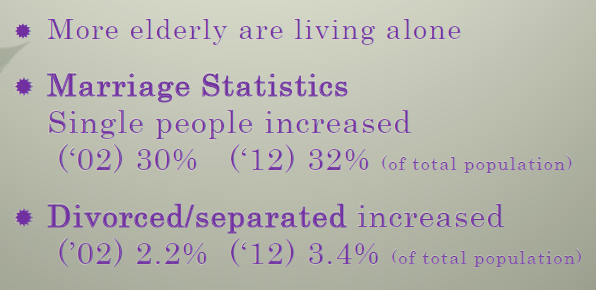I have been doing quite a bit of heavy duty blogging on the "IPS forum on CPF and retirement adequacy" and I am glad I decided to focus on the 8 expert speakers at the two panel discussions because there is not enough coverage provided by the media.
If you would like to read what was reported in the media, here are links to ChannelNewsAsia's reports:
When the CPF system was introduced in 1955, the retirement age was 55. Life expectancy then, was between 60 and 62. Today, for those turning 65, one in two will live beyond 85, and one in three will live beyond 90.
"What happens if you are that one in three? What happens if you are that one in two?,” said Mr Tan. “So when we talk about shifting goal posts, I would say it is actually not about shifting goal posts. I think the game has changed, it is the same game but the rules have changed. The playing pitch has enlarged in very significant ways, the game is played slightly differently."
The Minimum Sum provides for a basic level of retirement payout. As people live longer, the Minimum Sum goes up too, to ensure adequate payouts. Currently, the Minimum Sum stands at S$155,000, after adjusting for inflation, for those who turn 55 in July. How the sum will be calculated beyond that is being reviewed.
Source: ChannelNewsAsia
Speaking at a forum on CPF and Retirement Adequacy organised by the Institute of Policy Studies on Tuesday (July 22), Deputy Prime Minister and Finance Minister Tharman Shanmugaratnam said options like private pension plans have to be studied carefully and it is important that people understand the risks involved.
Mr Tharman said the CPF system has served Singaporeans well, and it will keep evolving to meet their changing needs. However, even as improvements are being made, it is important to keep the basic strengths of the CPF system, he added. These strengths include giving a fair return to ordinary CPF members, without exposing them to financial risks they cannot carry.
For those who can stomach higher risks, he said he agreed that the Government should study how to provide options so that they can try to earn higher returns than what is currently provided under the CPF investment scheme.
Source: ChannelNewsAsia
Anyway, enough of heavy duty blogging for now. Here is something light to give my brain a break.
Photos of lunch at the forum:
 |
| Garden salad. |
 |
| Chicken, carrots, cucumber and potato. |
 |
| Fruits and some French sounding dessert. |
Everyone had the same 3 course lunch and I hope Roy enjoyed the lunch treat as well.
Roy?
Which Roy?
This Roy:
 |
| Roy Ngerng at the forum. |
I saw him during the coffee breaks but the face did not register until he stood up, identified himself before putting questions to DPM in the afternoon.
Till now, I still think his current situation could have been avoided. Seriously.
Many have questioned the CPF system before. Many have criticised the CPF system before. However, not many, if any, were foolish enough to defame the Prime Minister in the process.
Still, I wish him the best of luck and I hope he does not do anything foolish again.
Related posts:
1. "Return our CPF" protest in Hong Lim Park.
2. "Return our CPF" protest? Why not a contest?
3. We can manage our money better than CPF can.














































